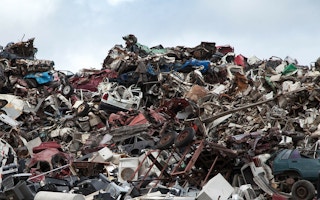We face a conundrum. The population is growing and expected to reach 9 billion people between 2040 and 2050. If world governments and civil society are successful in achieving the Sustainable Development Goals, billions of people will rise out of poverty. And 9 billion people consuming as much stuff — food, clothing, gas and merchandise — as today’s average middle class person will simply strip the planet bare.
The answer to this conundrum is to reinvent our business models in the context of this new reality. Improving efficiency is not enough. We need to reengineer our current model of pulling material out of the earth and then tossing waste into landfills.
On July 7, 2016 I moderated a panel discussion in Washington, D.C. hosted by the Embassy of The Netherlands. The panelists represented companies embracing what we call the “circular economy,” or an economic model by which waste is not just avoided, but is completely re-envisaged. They shared three insights on how the circular economy can work for consumers, for businesses and for the planet:
1) Bake circular design into the business model.
For each of these companies, circular design was a priority at the early stages of business model development. gDiapers, a compostable diaper company based in Australia, was founded by a husband and wife after they became parents and were shocked by the amount of diaper waste they produced.
Inashco, a Dutch company, formed to make use of the metals and minerals that can be harvested from the ash of industrial incinerators. And Philips, the lighting manufacturer, is now moving toward providing lighting services rather than individual light bulbs alone. For example, the company holds a 10-year lighting maintenance contract with the Washington Metropolitan Area Transit Authority.
2) Think creatively about your customer base.
Another common thread in the stories I heard from panelists was the process of getting to the right customer and understanding their needs. gDiapers originally sold compostable diapers directly to consumers, but was unable to produce them at a competitive cost.
Their solution was to sell a complete diaper service to childcare centers instead, including collecting and composting the used diapers and selling the compost. This model allowed gDiapers to lower the prices of its diapers and find a loyal and enthusiastic customer base in childcare centers, which are happy to dramatically reduce their sizable waste-disposal expenses.
Similarly, when Dutch start-up Better Future Factory developed a low-tech machine that transforms used plastic bottles into attractive building tiles that resemble marble, it discovered that its best customers were hardware stores and microentrepreneurs in Angola.
“
Improving efficiency is not enough. We need to reengineer our current model of pulling material out of the earth and then tossing waste into landfills.
3) Good policy can support good business models.
Lastly, the policy landscape matters. When governments do not price the use of land at its real environmental value, it encourages inefficiency and compromises the business case for circular design. Companies like gDiaper that eliminate waste have more to offer in regions where waste disposal is priced at its cost to society.
Though higher prices for trash dumping might sound like a burden on companies and consumers, we are seeing that the market will adapt with innovative, highly efficient solutions.
To solve the “stuff conundrum,” the private sector will need to tap its most creative and optimistic minds for new products and business models that respect the real value of the natural world. Early examples of circular design show exciting opportunity for growth.
The circular economy can be a win-win for the environment, the private sector and consumers— and companies that embrace it now may find themselves better prepared in a changing world.
Kevin Moss is the Global Director of the Business Center, World Resources Institute. This post is republished from the WRI blog.









